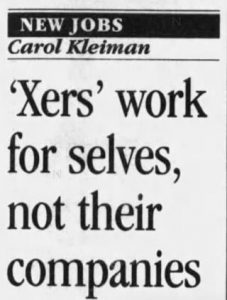Financial Planning for Tailored B2B Marketing Campaigns
In today’s dynamic B2B business landscape, effective B2B marketing is essential for attracting and retaining clients. However, crafting and executing a successful marketing campaign requires more than just creative ideas; it demands sound financial planning and management. In this article, we will explore the financial aspects of B2B marketing and offer insights into setting realistic budgets, tailoring campaigns to financial resources, and managing financial risks.
Understanding B2B Marketing and Its Financial Implications
B2B marketing is fundamentally different from B2C marketing. While B2C focuses on reaching individual consumers, B2B targets other businesses as customers. This distinction has significant financial implications. In B2B marketing, the sales cycles are typically longer, deals involve higher stakes, and the decision-making process often requires buy-in from multiple stakeholders within the organization.
The Financial Challenge: B2B Marketing Budget Management
One of the key financial challenges in B2B marketing is budget management. Allocating resources effectively is crucial for generating a strong return on investment (ROI). Your B2B marketing budget management should be driven by a deep understanding of your target market, industry trends, and the competitive landscape. It’s not just about spending money; it’s about spending it wisely.
Setting Realistic Budgets for B2B Marketing
To ensure your B2B marketing campaigns are financially sustainable, it’s imperative to set realistic budgets. Here’s how to approach it:
- Assess Your Financial Resources: Start by evaluating your organization’s financial capabilities. Consider your revenue, cash flow, and available capital for marketing. Be realistic about what you can afford.
- Market Research: Conduct thorough market research to understand the industry benchmarks for marketing budgets. This will help you gauge how your budget compares to your competitors.
- Goal-Oriented Budgeting: Align your budget with your marketing objectives. If you’re aiming for rapid growth, you may need to allocate a larger percentage of your revenue to marketing. Conversely, if you’re in a cost-conservative phase, your budget may be more modest.
- Testing and Optimization: Consider allocating a portion of your budget for testing and optimization. Experimentation is vital in B2B marketing, and you’ll need room for adjustments as you gather data and insights.
Tailoring Marketing Campaigns to Your Financial Resources
Once you’ve established a budget, the next step is to tailor your marketing campaigns accordingly. It’s essential to make the most of your available resources, considering different niches. Here’s how to do it effectively:
- Focus on Targeted Marketing: Instead of casting a wide net, concentrate your efforts on reaching the most promising leads and prospects. For example, if you’re in charge of B2B marketing for a healthcare organization, you may require specialized strategies to target medical professionals and institutions. On the other hand, if you’re in the real estate sector, your focus could be on targeting potential property buyers or investors.
- Content Strategy: Create high-quality content that resonates with your audience. Content marketing can be cost-effective and highly impactful when executed well.
If you’re in the fashion industry, tailor your content to showcase the latest trends and style tips. On the other hand, if you’re in the food and beverage sector, you can create content that highlights recipes and culinary experiences.
- Leverage Digital Marketing: Embrace digital channels like social media, email marketing, and search engine optimization. These platforms offer cost-effective ways to connect with your target audience and track your marketing performance.
If you’re in the travel industry, you can use social media and online advertising to promote destinations and travel packages. On the other hand, if you’re in the tech sector, leverage digital marketing to showcase your innovative products or services.
- Automation and CRM: Implement marketing automation and customer relationship management (CRM) tools to streamline your processes and make the most of your marketing dollars. These tools can help you nurture leads, track interactions, and optimize your campaigns.
For instance, in the automotive industry, automation can help you manage leads and customer inquiries more efficiently. In the fitness and wellness sector, CRM tools can assist in tracking member interactions and scheduling classes.
Financial Risk Management in B2B Marketing
In the world of B2B marketing, financial risk management is crucial. The competitive nature of the business landscape means that investments in marketing may not always yield immediate results. Here are some strategies for mitigating financial risks:
- Diversify Your Marketing Mix: Don’t put all your eggs in one marketing basket. Diversify your marketing strategies to spread risk. For instance, alongside your content marketing efforts, you might explore paid advertising or strategic partnerships.
- Monitor Key Performance Indicators (KPIs): Regularly track and analyze your KPIs to ensure your marketing efforts are on the right track. Adjust your strategy based on the data to optimize your ROI.
- Contingency Planning: Prepare for unforeseen circumstances that may impact your marketing budget. Economic downturns, industry shifts, or unexpected events can disrupt your plans. Having contingency plans in place will help you adapt.
- Benchmarking and Competitive Analysis: Continually assess your competitors and market trends. Knowing what others in your industry are doing can provide valuable insights into the potential risks and opportunities.
Conclusion
Effective financial planning is the backbone of successful B2B marketing campaigns. By understanding the financial implications of B2B marketing, setting realistic budgets, tailoring campaigns to your financial resources, and implementing robust financial risk management strategies, you can maximize the impact of your marketing efforts.
(37)
Report Post





